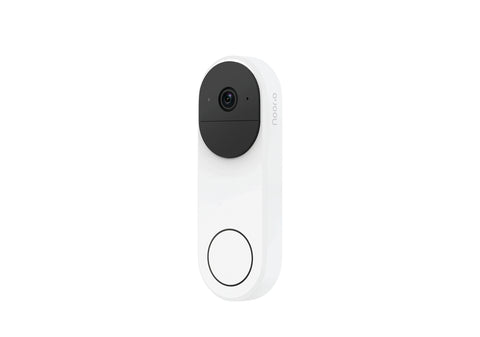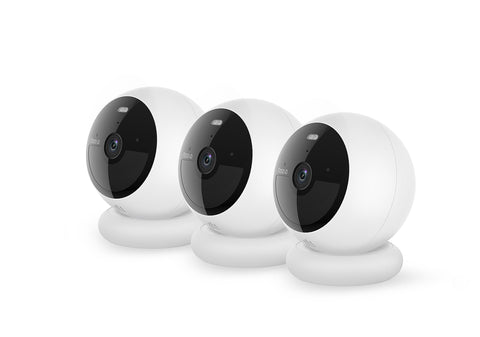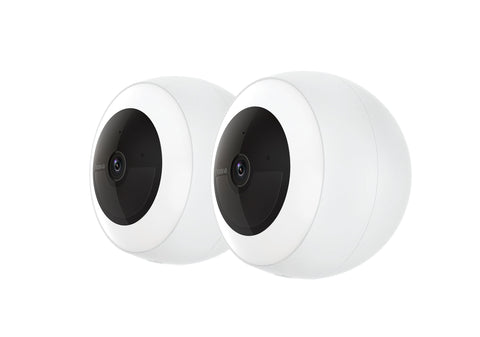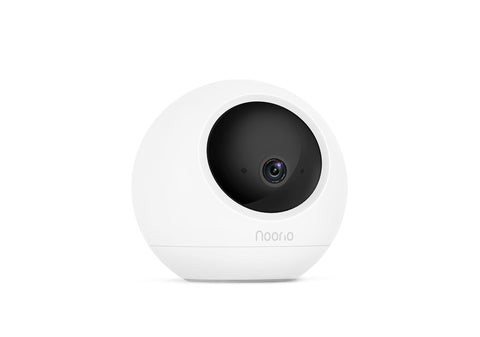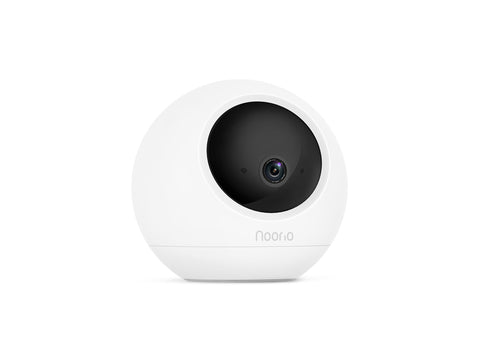Night vision security cameras have become super popular for monitoring your home around the clock, even when it's totally dark. But how do these cameras actually see once the lights go out? The tech behind night vision is pretty neat and allows clear imaging in low light for security, research, and more.
Let's take a quick look under the hood to understand how night vision cameras can keep watch over your home after sunset:
The Major Night Vision Technologies
There are three main technologies that enable cameras to see in low-light conditions:
1. Infrared Illumination
This is the most common tech in security cams. The camera has IR LEDs that emit invisible infrared light. This light bounces off stuff in view and is picked up by the cam's sensor to form an image. Many cams have a filter that slides away at night to let in the IR waves.
Many night vision security cams also have a handy IR cut filter. This filter slides in front of the camera's sensor during the daytime to block infrared light from getting in. That ensures colors look natural and accurate in daylight. After dark, the filter automatically slides out of the way so the infrared light can hit the sensor and enable night vision capabilities.
2. Thermal Imaging
This technology detects the heat signatures of objects rather than visible light. It uses a heat sensor to detect temperature differences and convert them into a viewable image depicting hotter objects in brighter colors or shades.
Since thermal imaging relies on heat rather than light, it can produce images in completely dark conditions without any IR illumination needed. However, the images may lack fine detail compared to other night vision approaches.
3. Image Enhancement
This technique amplifies the available ambient light in a scene, including low-level light invisible to the human eye. Traditional image enhancement systems use intensifier tubes, while more modern digital systems use image processing algorithms to boost low-light images.
Image enhancement night vision relies on some minimal ambient light source, either artificial or natural, to function. It cannot work in completely absent light conditions like thermal imaging.

Core Components and Working Process
Night vision security cameras contain these key components that enable low-light viewing:
- Lenses- high-quality lenses gather and focus ambient light onto the image sensor. Larger lenses can collect more light.
- Image sensor- the camera's image sensor converts light into electrical signals, just like a standard digital camera sensor. But low light sensors are extra sensitive.
- Processors- image processors execute algorithms to process the raw data from the sensor and convert it into viewable night vision images and footage.
- IR illuminator- the IR illuminator refers to the camera's IR LED lights. These are switched on in night mode to flood the scene with IR light. The illuminator can be built into the camera or external. Higher power illuminators provide more IR range.
- Display- the camera's display screen, smartphone app, or security monitor shows the enhanced night vision image. Wireless cameras transmit footage to a receiver.
- IR cut filter- this filter blocks IR light during the daytime for accurate color and slides out of the way at night so the camera can use IR illumination.
Here is the step-by-step process:
- Ambient light enters the camera through the lens. This includes normal visible light during the daytime or minimal low light at night.
- The image sensor converts the light into electrical signals, just like a digital camera sensor.
- The processor chip enhances the image, which is especially crucial at night. Algorithms amplify the weak signal.
- The IR illuminator kicks in when needed, bathing the scene in infrared light invisible to our eyes.
- The enhanced night vision image, either in black & white or color night vision mode, is displayed on the camera's screen or monitor.
Key Factors to Consider when Choosing Night Vision Security Camera
When selecting a night vision security camera, here are some key features and factors to consider:
1. IR Illumination Strength
Brighter IR light means clearer images in very dark conditions. Look for power ratings of the IR LEDs, effective IR light distance, and wide IR illumination angle. External IR spotlights can supplement built-in camera IR.
2. Black & White vs Color Night Vision
Black & white night vision delivers a longer viewing range but less fine detail compared to color night vision. Color allows discerning clothing details, for example. It's better for security, while black & white suits wide area surveillance.

3. Light Sensitivity
The camera's image sensor should have high light sensitivity, rated in units like lux or <1 lux for low light capability. This allows it to produce quality images from minimal ambient light. Starlight or dark fighter sensors excel here.
4. Video Resolution
Higher video resolutions like 4K provide more detail but require more storage space. Lower resolution, like 720p, is sufficient for many use cases.
5. Weather and Vandal Resistance
For reliable outdoor operation, the camera needs weather sealing, waterproofing, and impact-resistant casing to withstand the elements.
6. Wired vs Wireless Installation
Both options are common. Wireless is easier to install but may have connectivity issues. Wired is more reliable but needs cabling.
7. Storage Capacity
Higher resolution and frequent motion-activated recording use up more memory. Ample onboard storage or an SD card slot is recommended. Cloud storage works for wireless cameras.
8. Smart Features
Useful extras like motion-activated recording, mobile alerts, spotlight activation upon trigger, and time-lapse capture.
9. Price Range
$50 to $400 for consumer models. Higher-end professional models cost over $1000. More expensive cameras generally offer higher quality.
It's also important to balance factors like:
- Surveillance range vs. level of detail needed
- Color detail vs cost and storage requirements
- Budget vs performance and features
And consider the context:
- General area monitoring vs high security
- Human or vehicle recognition
- Indoor vs outdoor setting
Daytime Image Quality Matters Too
A high-quality daytime image allows for capturing clear details like faces, license plates, and clothing logos when needed. Features that help here include:
- Sharp, high-resolution image sensors (5MP or higher)
- Larger image sensor size and pixel size like 1/2" or 1/3"
- High-quality all-glass lenses for crispness
- 265 and 4K video compression
- IR cut filter for accurate color rendering
So make sure to evaluate the camera's daytime image quality specifications too before buying.
The Benefits of Night Vision Security
Having explored how night vision security cameras work, let's recap some of the key benefits they provide:
- 24/7 surveillance- continuous monitoring regardless of lighting conditions or time of day.
- Enhanced security- night vision cameras deter, detect, and identify burglars even in total darkness. Essential for security.
- Peace of mind- know what's happening on your property even at night for added comfort and safety.
- Business purposes- monitor night-time processes, inventory, etc. for restaurants, warehouses, shops, and more.
- Wildlife research- observe nocturnal animal behavior with minimal interference. Useful for scientists, conservationists, etc.
- Recreation- enjoy night hiking, camping, boating, etc. with night vision enhancing your vision.

Conclusion
Night vision tech has unlocked tons of handy uses that go way beyond just home security cameras. With the ability to see in the dark, we can monitor and record places and times that sunlight doesn't reach. Night vision allows around-the-clock surveillance, nocturnal wildlife research, exploration in caves, and more cool applications. So even when the sun sets, the world doesn't have to go completely dark, thanks to nifty illumination methods, light-boosting cameras, and heat-sensing thermal imaging.
